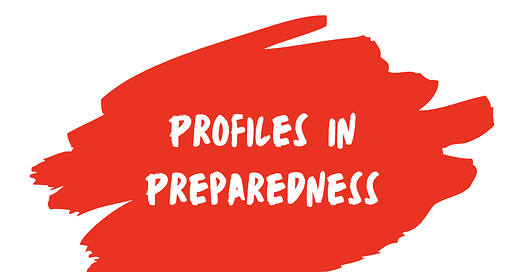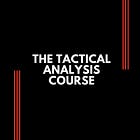Rearview Mirrors + AI in Wildfire Forecasts + Security Strategy & More
Profiles in Preparedness #24
You don’t drive by looking in the rearview mirror. You can’t do that and expect not to crash. To stay on the road, you need to look forward and see what’s ahead. The rearview mirror matters and it helps you stay aware of what’s happening around you, but it isn’t how you steer.
In many organizations, though, that instinct doesn’t carry over to how we lead teams or make decisions. For a lot of leaders, the news becomes the default way to understand the environment and to see what’s happening in the world, in their community, or in their industry. But that’s a reactive source. It only shows what has already happened. It’s the equivalent of driving while looking in the rearview mirror. And it creates a blind spot in our decision-making.
The Watch Office was built to fix that. It’s designed for public safety professionals, security leaders, and organizational decision-makers who want to lead from a forward-looking posture. It was developed to provide indicators and early warning signals to get in front of risks, shape planning conversations, and stay ahead of what’s coming.
If you’ve been meaning to try it out, now’s the time. There’s one day left to subscribe at the discounted launch rate.
Inside The CP Journal
Here are some of the articles that were added to the site this week.
This analysis was developed as part of a wildfire evacuation planning project for a Colorado jurisdiction. It addresses a key stakeholder's question: How do wildfire-related civilian fatalities in Colorado compare to national patterns over the past 25 years? Drawing from incident records, after-action reports, and media accounts, this report summarizes where, when, and how wildfire fatalities have occurred, with a focus on evacuation timing and decision-making.
I’m proud of how our Left of Bang-focused online course continues to resonate with public safety professionals and security practitioners. These testimonials came before we added 20+ bonus lessons and practice videos on our new platform — take a look at what’s already made an impact.
This Week‘s Reads
Here are a few standout reads from this week with insights, ideas, and perspectives that caught my attention.
Article | Security Programs - A Plan is Not a Strategy. Too often, teams confuse planning with strategy, but as former Google Cloud CISO Phil Venables argues, they’re not the same. Strategy is about defining how you will win. For public safety and security leaders, that starts with knowing what success and winning looks like and then building capabilities that deliver on that vision. I appreciated how this piece frames the difference and offers a clear lens for anchoring your annual planning to something more durable.
Article | When humans and AI work best together — and when each is better alone. The goal shouldn’t be to split tasks between AI and people, it’s to rethink how the two work together. This piece challenges the assumption that AI-human teams always outperform either on their own. Instead, it’s about aligning strengths: AI thrives on scale and repetition; humans bring context and judgment. The real advantage comes from redesigning the process itself and is a reminder that better outcomes often start with better questions.
Article | AI Beats Traditional Weather Models in Forecasting Wildfires. Traditionally, wildfire forecasts have centered on weather models that focus on temperature, relative humidity, wind speed, and precipitation. New AI models and research not only use the traditional indicators, but also include other datasets that include potential fuel sources and human activity to more accurately identify high-risk regions. I don't know all of the work that will go into further bringing these new datasets alongside meteorologists, but look forward to the continual progress in our forecasts. If you're interested in the research underlying this article, here it is.
Article | Moves Only a CEO Can Make. I was thinking about this article while evaluating an exercise this week — specifically about the role of the Incident Commander (IC). Many ICs come from operations and know, conceptually, that they need to give the Ops Section Chief room to lead. But because that’s often their comfort zone, it raises a tough question: If I’m not doing that… what am I doing? That question gets even harder in the chaos of a disaster when people want to have an impact. This article offers a valuable lens for disaster leadership and can help ICs focus on the high-impact moves only they can make: creating purpose, clarity, enabling focus, building capacity, and removing friction and complexity. These are problems that experienced leaders are uniquely positioned to spot and address, and the ones that make the biggest difference when it counts.
When You’re Ready
Thanks for reading this week’s email. If you found this newsletter valuable, consider sharing it with a colleague or friend who might enjoy it.
If you want more in-depth insights, you can become a paying subscriber to access exclusive content like our Watch Office emails, Tactical Analysis Course, behavioral analysis practice exercises, and the “Project Management in Emergency Management” Playbook.
And if you’re thinking about how to strengthen your organization's preparedness, that’s what we do. Whether it’s assessments, planning, speaking events, or exercises, we help teams build the skills and strategies to stay ahead of the next challenge.





